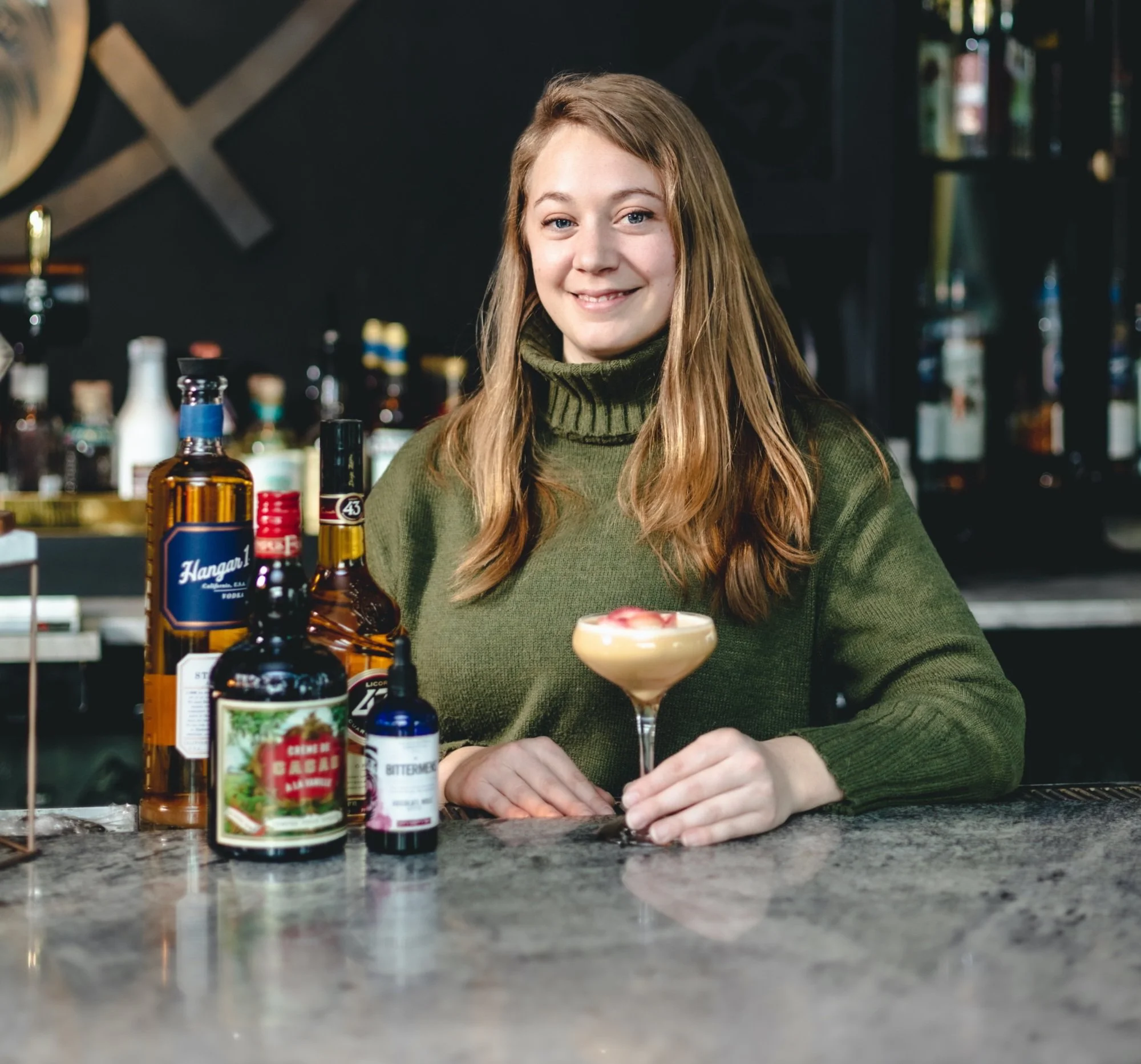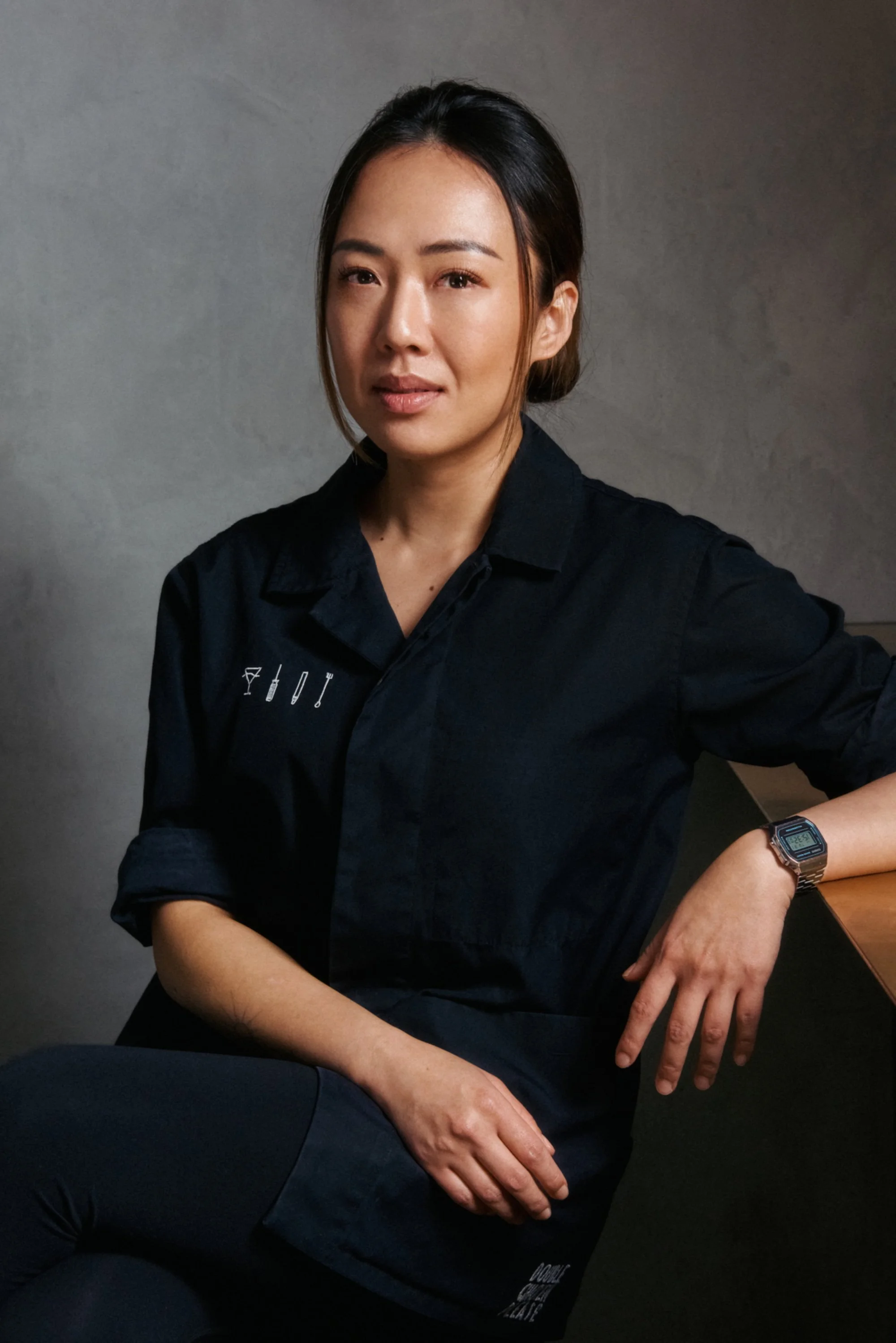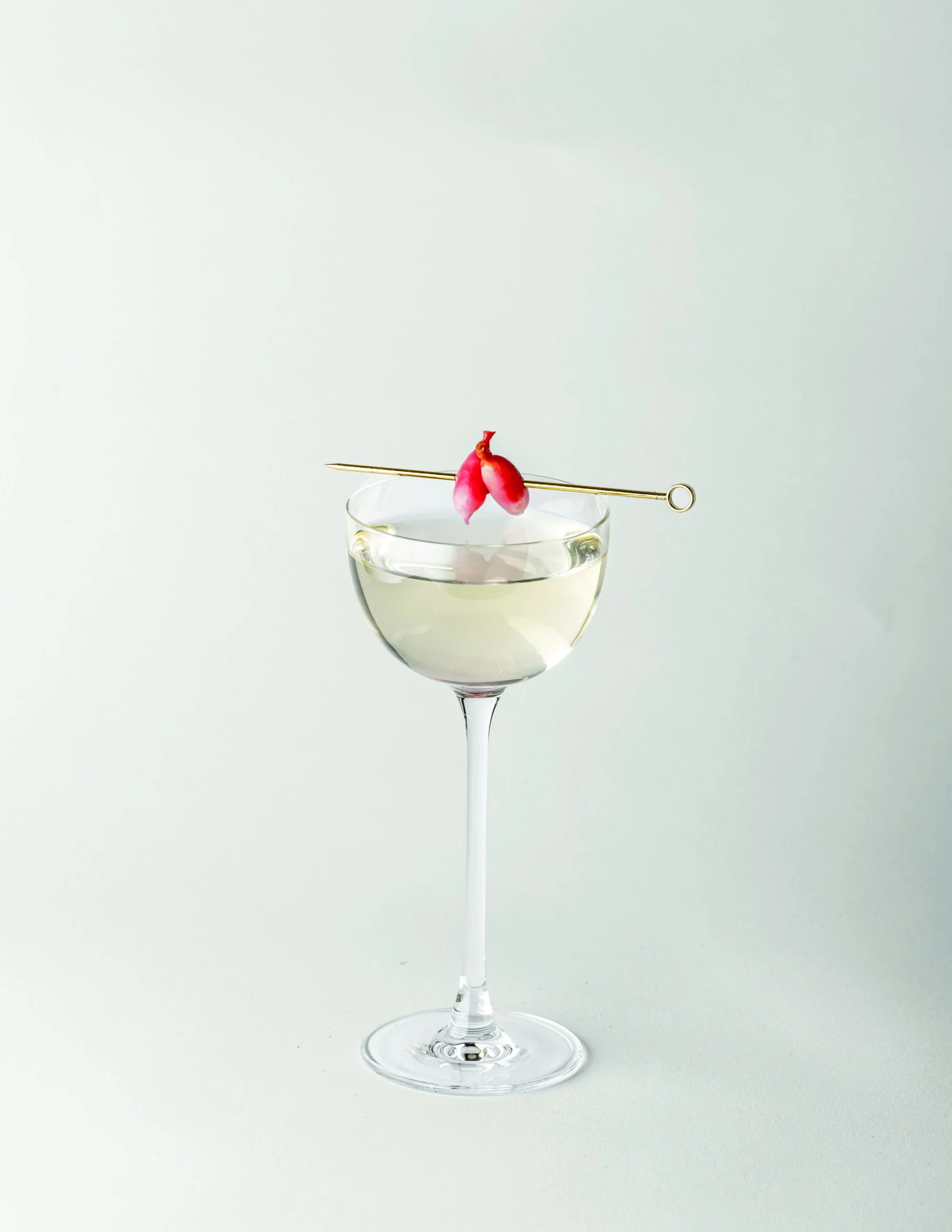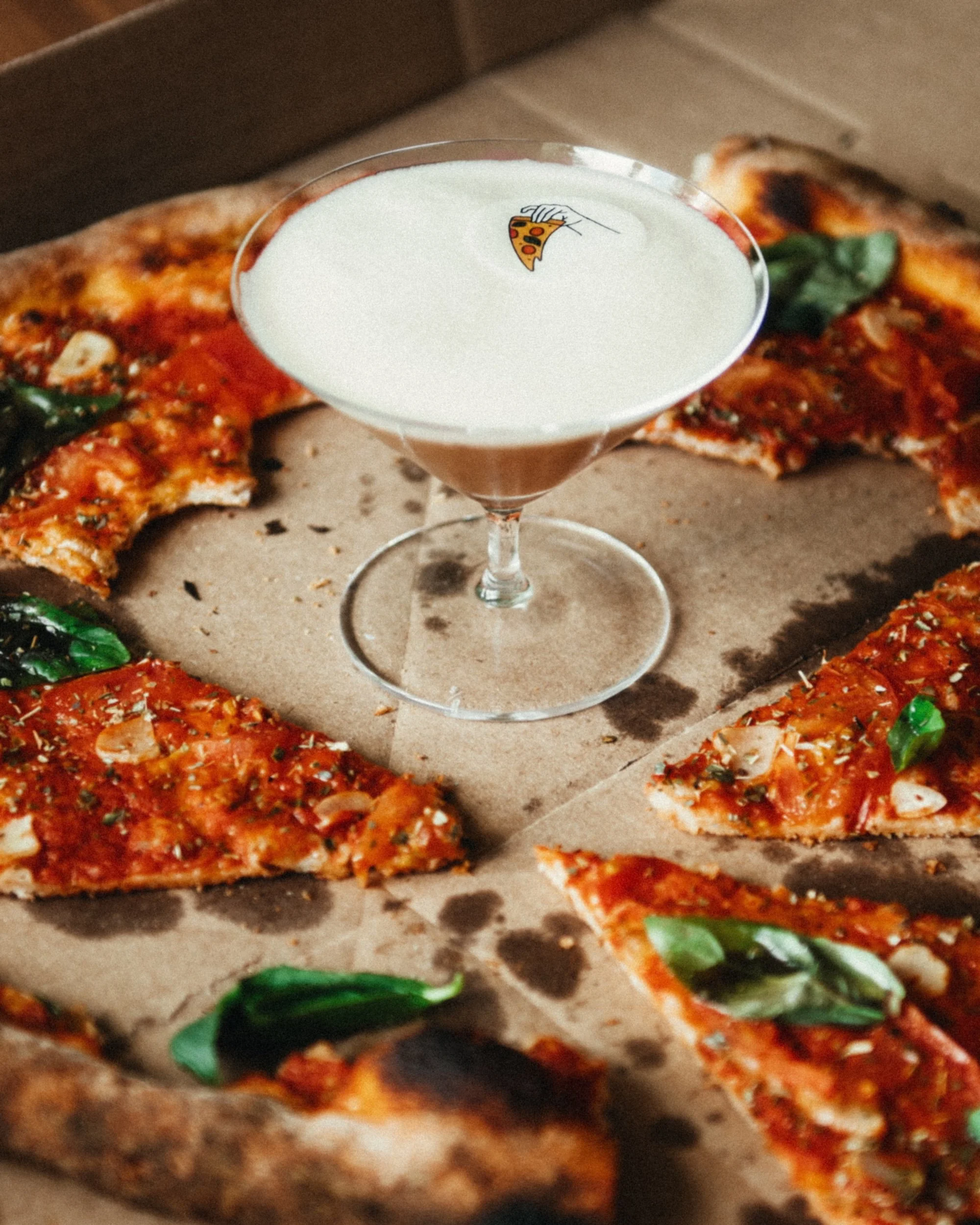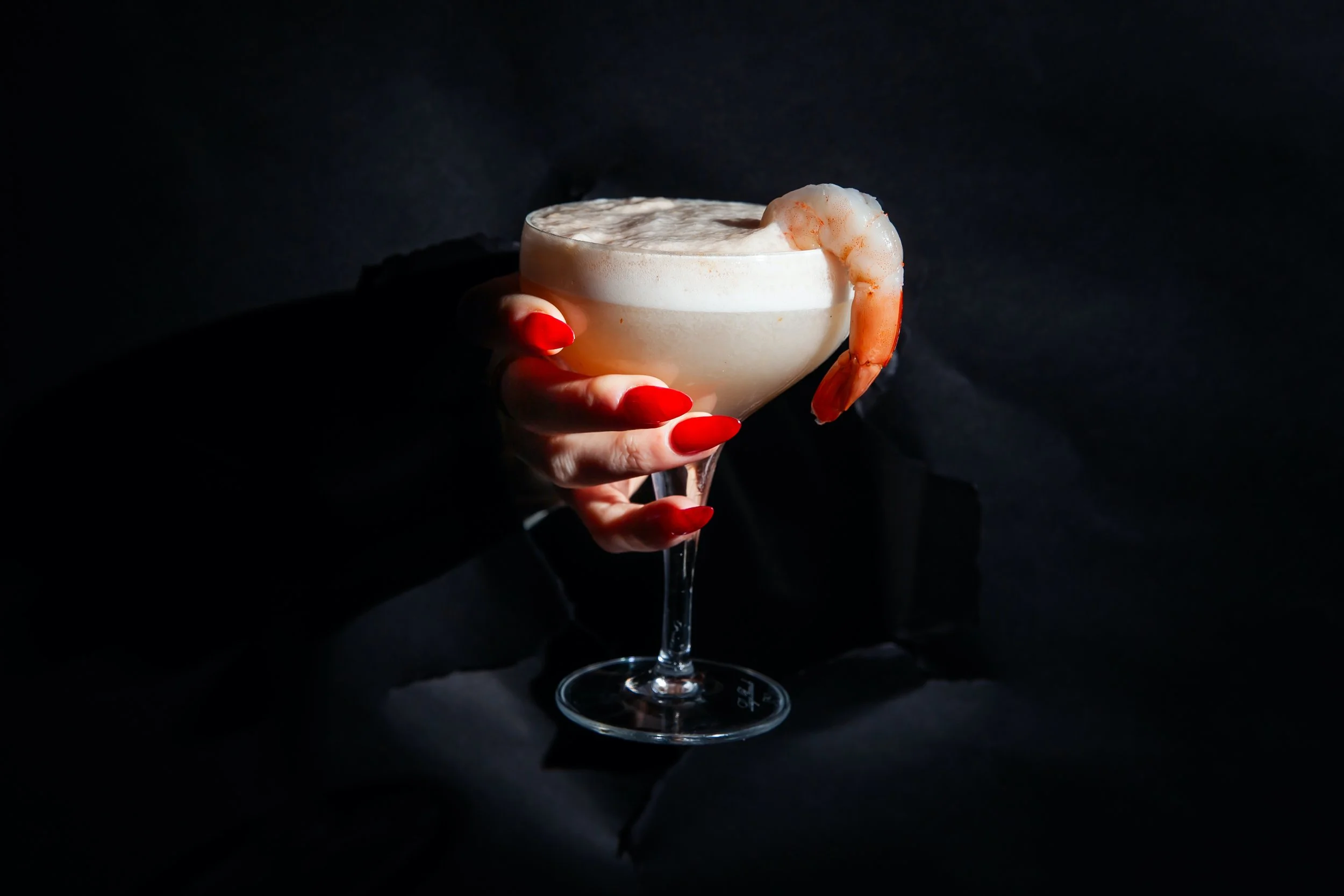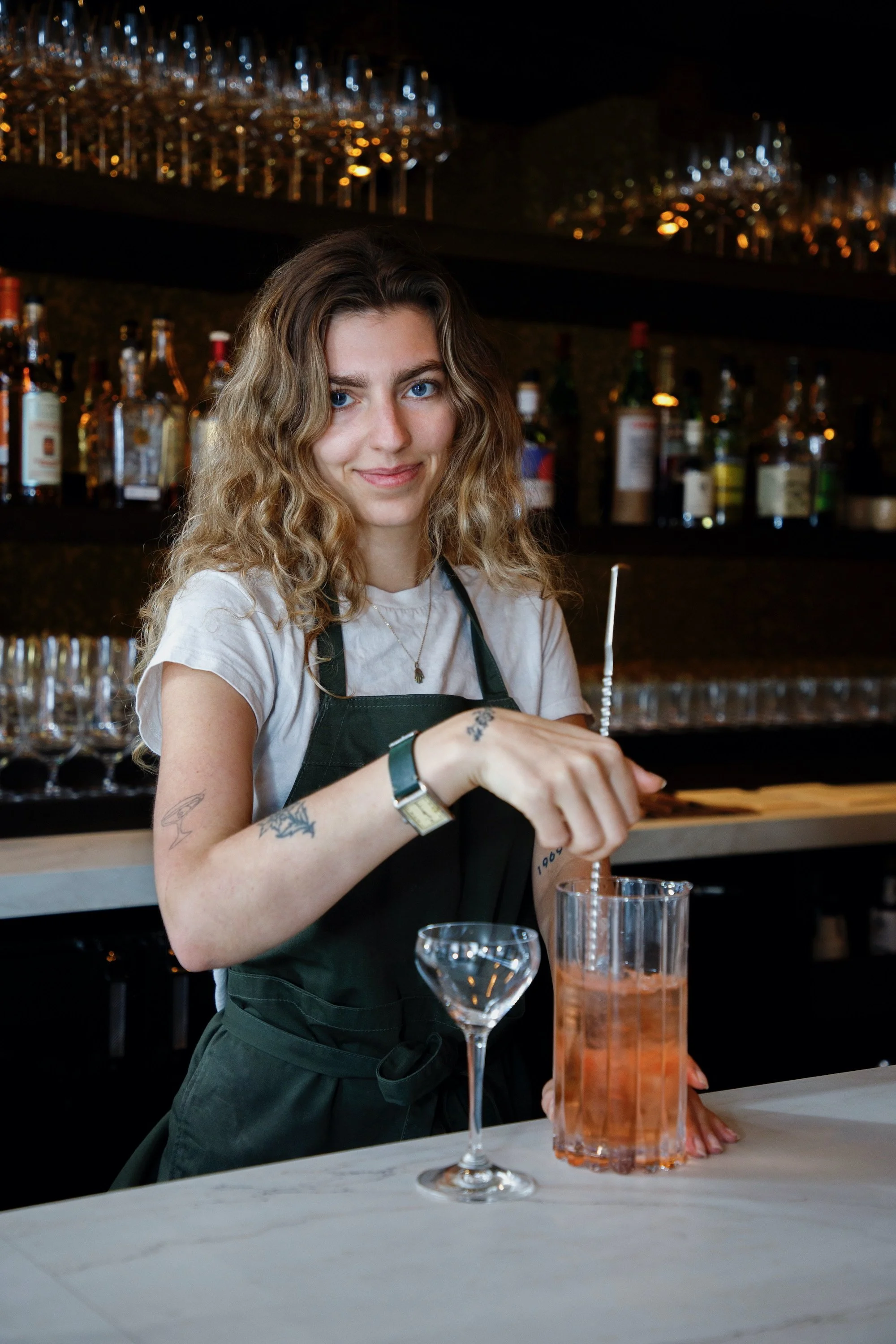How 4 Bars Make Savory Cocktails
Savory cocktails
The savory cocktail seems new, but it’s been in bars and restaurants for decades with drinks like the Bloody Mary and the Dirty Martini. In 1952, the Bullshot —vodka, Worcestershire, Tabasco, lemon juice…and beef broth— was invented in Detroit’s Caucus Club and has recently been reemerging in cocktail bars throughout Detroit. But that’s just the start. Mixologists across the United States are making savory cocktails, drawing upon popular dishes or focusing on individual ingredients.
Why Savory Cocktails?
New flavors
Another approach to seasonality
Innovation/Creativity
Minimizing sugar
Blurring the boundary between kitchen and bar
More variety and balance on bar menu
Freshness
Aneka Saxon, mixologist photo credit Machine Hospitality Group
Savory cocktails offer bartenders and patrons new flavors. Aneka Saxon, mixologist at Chicago-based Machine Cocktail Bar, explains, "I've made many drinks in my life, and it gets boring at a certain point when you're like, ‘Okay, I've done all the fruits. I understand the pear. I love the pear. But what if I put the pear with goat cheese instead of with vanilla? How fun would that be?’" Small changes like that can make big and innovative differences in cocktails. She’s also worked to recreate entire dishes in her drinks.
Timofei Osipenko, bar manager at San Francisco-based Bar Iris, points out that using these savory ingredients is a way to make a more interesting seasonal cocktail. He recalls when strawberry and basil was once considered a crazy combination, now it’s more mainstream. He finds inspiration with fresh seasonal ingredients to make new innovative drinks.
Faye Chen
Faye Chen, Co-founder, General Manager and Bartender of New York City-based Double Chicken Please, which was ranked 14 on the World’s 50 Best Bars in 2024 list notes, “Ingredients like shiso, gochujang, tamarind, curry leaf, and fish sauce are becoming more accessible and familiar to Western audiences. As global culinary exploration expands, so does curiosity in cocktail experimentation.”
Health also may play a significant role. Chen explains, “Consumers are more mindful of sugar and artificial ingredients. Savory cocktails often rely on fresh produce, broths, spices, or vinegars—perceived as cleaner, more natural choices.”
Olivia Fadden, bar lead of Chicago-based Beity, explains that the trend is both about moving away from sweet drinks and having more innovation. She says, “A lot of people are scarred by sweet cocktails.” Savory cocktails are a "stepping stone for mixologists to play with. It's such an overlooked style of cocktail.”
Chen believes that the savory trend is also driven by a culinary crossover. She explains, “As the line between kitchen and bar blurs, more bars are incorporating culinary techniques and ingredients—think umami, fat-washing, fermentation, and stocks. Bartenders are increasingly taking cues from chefs.”
Timofei Osipenko credit Bar Iris
Savory cocktails are also a way to balance out a cocktail menu. Timofei Osipenko explains, “if you just took each individual cocktail and you treated it as its own thing, you’d end up with 12 egg white cocktails.” Much like making a balanced cocktail, mixologists have to work to make sure the cocktail offerings provide a balance of sweet, dry, and savory cocktails. So adding savory cocktails is another way to provide another element of taste to cocktail menus.
Bar Iris: Focus on Japanese Flavors
Tsukemono from Iris Bar
Not only does Osipenko look to savory ingredients to find new ways to innovate cocktails, he’s also looking to Japanese flavors. He states, “We are a Japanese-inspired cocktail bar, and umami is just such a big flavor component of Japanese culture that is just naturally going into the cocktails.”
For instance, Osipenko created the Tsukemono Martini, which is his riff on a dirty martini. People should recognize it as a dirty martini but with unique ingredients. It includes Osuzu Gin; Imo Shochu, a savory gin from sweet potato shochu, which is a distilled spirit that is comparable to vodka; nama genshu sake, which is an undiluted sake. The drink also includes sake lees, which is a byproduct of the sake making process, and tsukemono cauliflower, which is basically a Japanese pickled cauliflower.
Another Bar Iris cocktail that utilizes savory elements is the Pear Pressure. Served this past winter/early spring, Osipenko describes it as a sort of milk punch. It includes Anjou pears and nori, which is dried edible seaweed. Osipenko explains that the nori really brings out the green skin nature of the Anjou pear. It also includes some olive vermouth that reinforces the nori and Calvados to emphasize the pear.
“It’s two flavors in a cocktail. It’s not a dry cocktail,” he says, “it’s a milk punch, which is something not a whole lot of people expect to be savory.” It’s something they recommend to folks who may be indecisive about flavors. The cocktail is more approachable and less aggressive than other cocktails.
Bar Iris also has a cocktail called “Uni” that uses sea urchin. Osipenko explains that it took six months to figure out how best to incorporate sea urchin into a cocktail. Eventually, he decided to make a flip style cocktail, which uses a whole egg, with Laphroaig Quarter Cask since the whiskey had the right balance of peatness and solidity. The drink includes
Château Les Justices Sauternes, a sweet French wine, and Alma Quinquina en Rama, an aperitif from Basque country, to add texture to the cocktail.
The Uni also includes yuzu sake to brighten up the cocktail; banana for richness; and finally safflower egg yolk syrup to reinforce the flora notes in the uni. The safflower egg yolk syrup also helps keep the bright yellow color that we associate with uni. As for the uni itself, it’s frozen and put into a silicon mold to ensure every drink has the same amount of uni.
For Osipenko, his cocktails are made from fresh ingredients. That means using what is seasonal and available, rather than relying on frozen ingredients or focusing on the spirits. The ingredients come first, then the spirits, he explains.
Double Chicken Please and Machine Cocktail Channel Classic Dishes
Cold Pizza cocktail from Double Chicken
While Bar Iris draws inspiration from ingredients in Japanese cuisine, Double Chicken Please and Machine Cocktail create cocktails reminiscent of classic dishes.
At Double Chicken, three cocktails are based on classic dishes: Japanese Cold Noodle, Cold Pizza, and Thai Curry, which are also the names of the cocktails. Faye Chen explains that the Japanese Cold Noodle aims to “Channel… the refreshing, savory essence (sesame oil) of a chilled noodle dish—layering bright acidity, savory depth, and a clean finish.” The cocktail tries to mimic cold soba bringing together a taste of sesame, fruit and citrus. She described it as a Piña Colada with cucumber and dash of sesame oil.”
The Cold Pizza cocktail aims to capture “the essence of margherita pizza with layered notes of tomato, cheese and herbs,” Chen explains. It contains clarified tomato water for brightness; basil for aromatic lift; and a hint of Parmesan for richness, which results “in a savory, chilled cocktail that’s nostalgic, cheeky, and surprisingly elegant,” she notes.
It was surprising to Chen that people reacted strongly to these cocktails because these flavors were tied up with memory and emotion. “Something like the essence of cold pizza or Thai curry can instantly transport someone, not just through taste, but through feeling. It’s not just about recreating a dish in liquid form—it’s about capturing its soul, balancing complexity without overwhelming, and watching guests be genuinely surprised that it works,” Chen concludes.
Like Double Chicken Please, Machine Cocktail Bar’s Aneka Saxon finds inspiration from chefs and pastry chefs, rather than other mixologists. She explains that she’s usually looking to create a cocktail tied to a food that someone may understand already. People can be nervous about trying new things, but a cocktail based on a familiar food can be a bridge for the customer.
Saxon frequently riffs off classic French food dishes since she wants people to still feel grounded in their palate with familiar flavors, just presented in a different medium. Sometimes it’s a subtle change, such as taking a citrusy and sweet drink and adding sage bitters to give it a savorer idea. Other times, it’s translating a dish to a savory cocktail. But she usually avoids onion and garlic since they are hard to mix ingredients with in liquid form.
Duck Duck Goose from Machine Hospitality Group
One of those classic dishes is the Duck à l'orange, which is embodied in the cocktail: Duck Duck Goose. She had wanted to create this animal meat flavor, but balanced out to make it drinkable. “Because no one wants to drink meat,” Saxon says. She used both rice vinegar, and amaro nonino, which is an Italian bitter orange liquor, to give that hint of orange sauce flavor. She explains that if she had made the Duck à l'orange sauce and mixed it in her cocktail, it wouldn’t have been tasty. “It's really about finding the right little flavors for me and then rebalancing them,” she explains. The end result is a super savory and balanced drink.
Shrimp Cocktail Cocktail from Machine Cocktail
The other popular dish turned cocktail is the aptly named Shrimp Cocktail Cocktail. But for Saxon, it was one of the hardest drinks for her to make. She really wanted to use shrimp in a drink, but she couldn’t find a way to make it work; it was “just all vaguely horrific with really rough smells.” She then decided to rethink the concept from a different direction. She asked herself: “In a sexy cocktail bar, what context would I be enjoying shrimp in? It would probably be raw. It would probably have some lemon in it… with interesting seasonings.”
Saxon ended up making a drink that was almost like a spicy honey vodka martini as a base with cocktail sauce foam on top. The only shrimp in the drink is served as a garnish. It’s bringing together the horseradish taste to connote cocktail sauce and then the shrimp to create the mental illusion of a shrimp cocktail.
In addition to savory cocktails, Saxon has been seeing more cocktails that she dubs “salad dressing cocktails” throughout the city. Mixologists are using shrubs and vinegars to create drinks that have a salad dressing flavor. “Some of them are really delicious, and some of them are a little out of balance. It’s tricky right? It’s a really fine line to ride.”
Beity Repurposes Ingredients
Olivia Fadden - Beity
When mixologist Olivia Fadden creates a savory cocktail, she often looks to reuse ingredients from the kitchen. For her, savory cocktails are “really about repurposing items in the kitchen that might get overlooked or thrown away” and figuring out how to use them in a cocktail.
For instance, she wanted to find a way to reuse brine from a pickled cauliflower dish. Normally, the brine would be thrown away. So she created the Mouné cocktail using pickle brine, dill tequila, dry vermouth, and fennel. It’s a wintrier cocktail, she explains; the name means preserving veggies for the winter in Lebanon.
Beets Me - Beity
In a cocktail named “Beets Me”, Fadden wanted to make a cocktail using beets. At the time, the kitchen had incorporated beets into its tasting menu so Fadden thought it would be a great time to repurpose the beets in a drink. Using a juicer, she made a beet and onion juice, added mezcal for smokiness, yellow Chartreuse, and lime juice. The result was a refreshing drink with a great mouth feel. It’s got sweetness to it, but the dill and brine give it that savory flavor. Fadden was surprised how people really got the cocktail and loved it.
Ultimately, Fadden focuses on the freshness of ingredients. “Things are made with a lot of syrups or liqueurs that are bought. Nothing's fresh anymore,” she explains, “So it's exciting to see, in my opinion, ingredients being used in cocktails that are fresh and like giving them a second life.” Plus she’ll give ingredients back to the kitchen for their use, like tahini used to wash Bourbon. “It’s just bringing us closer to no waste, which is really cool,” she concludes.
Whether it’s drawing on familiar dishes or unexpected ingredients, there’s some exciting drinks out there for people who want to try something new or something out of this world.


